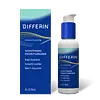What's inside
What's inside
 Key Ingredients
Key Ingredients

 Benefits
Benefits

 Concerns
Concerns

 Ingredients Side-by-side
Ingredients Side-by-side

Water
Skin ConditioningGlycerin
HumectantDipropylene Glycol
HumectantHydrogenated Polydecene
EmollientCetyl Ethylhexanoate
EmollientButyrospermum Parkii Butter
Skin ConditioningPolyglyceryl-3 Distearate
EmulsifyingCetearyl Alcohol
EmollientGlyceryl Stearate
EmollientTrimethylpentanediol/Adipic Acid/Glycerin Crosspolymer
Skin ConditioningCaprylyl Methicone
Skin ConditioningVinyldimethicone
Glyceryl Caprylate
EmollientSorbitan Sesquioleate
EmulsifyingSodium Acrylate/Sodium Acryloyldimethyl Taurate Copolymer
Emulsion StabilisingGlyceryl Stearate Citrate
EmollientDimethiconol
EmollientCarbomer
Emulsion StabilisingPolyisobutene
Caprylic/Capric Triglyceride
MaskingEthylhexyl Palmitate
EmollientNiacinamide
SmoothingEthylhexylglycerin
Skin ConditioningXanthan Gum
EmulsifyingSorbitan Oleate
EmulsifyingCaprylyl/Capryl Glucoside
CleansingHydrogenated Lecithin
EmulsifyingDisodium EDTA
Squalane
EmollientCollagen Extract
Skin ConditioningButylene Glycol
HumectantTromethamine
Buffering1,2-Hexanediol
Skin ConditioningPentylene Glycol
Skin ConditioningCaprylyl Glycol
EmollientHydroxyacetophenone
AntioxidantSodium Hyaluronate
HumectantHydrolyzed Hyaluronic Acid
HumectantHydroxypropyltrimonium Hyaluronate
Lonicera Japonica Flower Extract
Skin ConditioningCentella Asiatica Extract
CleansingSodium Hyaluronate Crosspolymer
HumectantSodium Acetylated Hyaluronate
HumectantCeramide NP
Skin ConditioningLeucine
Skin ConditioningLysine
Skin ConditioningMelaleuca Alternifolia Leaf Extract
PerfumingMadecassoside
AntioxidantMadecassic Acid
Skin ConditioningAsiaticoside
AntioxidantAsiatic Acid
Skin ConditioningPhenylalanine
MaskingValine
MaskingThreonine
Tocopherol
AntioxidantCeramide Ns
Skin ConditioningCeramide As
Skin ConditioningCeramide AP
Skin ConditioningCeramide EOP
Skin ConditioningWater, Glycerin, Dipropylene Glycol, Hydrogenated Polydecene, Cetyl Ethylhexanoate, Butyrospermum Parkii Butter, Polyglyceryl-3 Distearate, Cetearyl Alcohol, Glyceryl Stearate, Trimethylpentanediol/Adipic Acid/Glycerin Crosspolymer, Caprylyl Methicone, Vinyldimethicone, Glyceryl Caprylate, Sorbitan Sesquioleate, Sodium Acrylate/Sodium Acryloyldimethyl Taurate Copolymer, Glyceryl Stearate Citrate, Dimethiconol, Carbomer, Polyisobutene, Caprylic/Capric Triglyceride, Ethylhexyl Palmitate, Niacinamide, Ethylhexylglycerin, Xanthan Gum, Sorbitan Oleate, Caprylyl/Capryl Glucoside, Hydrogenated Lecithin, Disodium EDTA, Squalane, Collagen Extract, Butylene Glycol, Tromethamine, 1,2-Hexanediol, Pentylene Glycol, Caprylyl Glycol, Hydroxyacetophenone, Sodium Hyaluronate, Hydrolyzed Hyaluronic Acid, Hydroxypropyltrimonium Hyaluronate, Lonicera Japonica Flower Extract, Centella Asiatica Extract, Sodium Hyaluronate Crosspolymer, Sodium Acetylated Hyaluronate, Ceramide NP, Leucine, Lysine, Melaleuca Alternifolia Leaf Extract, Madecassoside, Madecassic Acid, Asiaticoside, Asiatic Acid, Phenylalanine, Valine, Threonine, Tocopherol, Ceramide Ns, Ceramide As, Ceramide AP, Ceramide EOP
Water
Skin ConditioningGlycerin
HumectantHydrogenated Polyisobutene
EmollientCeteareth-20
CleansingCetearyl Alcohol
EmollientPersea Gratissima Oil
Skin ConditioningTocopheryl Acetate
AntioxidantDimethicone
EmollientPanthenol
Skin ConditioningCitric Acid
BufferingSodium Levulinate
Skin ConditioningCaprylyl Glycol
EmollientBenzyl Alcohol
PerfumingStearoxytrimethylsilane
EmollientStearyl Alcohol
EmollientAcrylates/C10-30 Alkyl Acrylate Crosspolymer
Emulsion StabilisingSodium Anisate
AntimicrobialWater, Glycerin, Hydrogenated Polyisobutene, Ceteareth-20, Cetearyl Alcohol, Persea Gratissima Oil, Tocopheryl Acetate, Dimethicone, Panthenol, Citric Acid, Sodium Levulinate, Caprylyl Glycol, Benzyl Alcohol, Stearoxytrimethylsilane, Stearyl Alcohol, Acrylates/C10-30 Alkyl Acrylate Crosspolymer, Sodium Anisate
 Reviews
Reviews

Ingredients Explained
These ingredients are found in both products.
Ingredients higher up in an ingredient list are typically present in a larger amount.
Caprylyl Glycol is a humectant and emollient, meaning it attracts and preserves moisture.
It is a common ingredient in many products, especially those designed to hydrate skin. The primary benefits are retaining moisture, skin softening, and promoting a healthy skin barrier.
Though Caprylyl Glycol is an alcohol derived from fatty acids, it is not the kind that can dry out skin.
This ingredient is also used as a preservative to extend the life of products. It has slight antimicrobial properties.
Learn more about Caprylyl GlycolCetearyl alcohol is a mixture of two fatty alcohols: cetyl alcohol and stearyl alcohol. It is mainly used as an emulsifier. Emulsifiers help prevent the separation of oils and products. Due to its composition, it can also be used to thicken a product or help create foam.
Cetearyl alcohol is an emollient. Emollients help soothe and hydrate the skin by trapping moisture.
Studies show Cetearyl alcohol is non-toxic and non-irritating. The FDA allows products labeled "alcohol-free" to have fatty alcohols.
This ingredient is usually derived from plant oils such as palm, vegetable, or coconut oils. There is debate on whether this ingredient will cause acne.
Due to the fatty acid base, this ingredient may not be Malassezia folliculitis safe.
Learn more about Cetearyl AlcoholGlycerin is already naturally found in your skin. It helps moisturize and protect your skin.
A study from 2016 found glycerin to be more effective as a humectant than AHAs and hyaluronic acid.
As a humectant, it helps the skin stay hydrated by pulling moisture to your skin. The low molecular weight of glycerin allows it to pull moisture into the deeper layers of your skin.
Hydrated skin improves your skin barrier; Your skin barrier helps protect against irritants and bacteria.
Glycerin has also been found to have antimicrobial and antiviral properties. Due to these properties, glycerin is often used in wound and burn treatments.
In cosmetics, glycerin is usually derived from plants such as soybean or palm. However, it can also be sourced from animals, such as tallow or animal fat.
This ingredient is organic, colorless, odorless, and non-toxic.
Glycerin is the name for this ingredient in American English. British English uses Glycerol/Glycerine.
Learn more about GlycerinWater. It's the most common cosmetic ingredient of all. You'll usually see it at the top of ingredient lists, meaning that it makes up the largest part of the product.
So why is it so popular? Water most often acts as a solvent - this means that it helps dissolve other ingredients into the formulation.
You'll also recognize water as that liquid we all need to stay alive. If you see this, drink a glass of water. Stay hydrated!
Learn more about Water